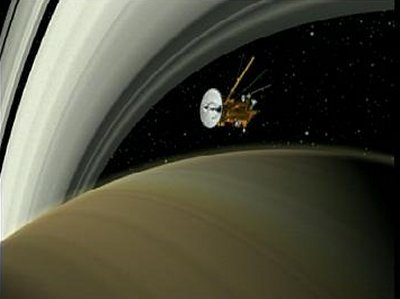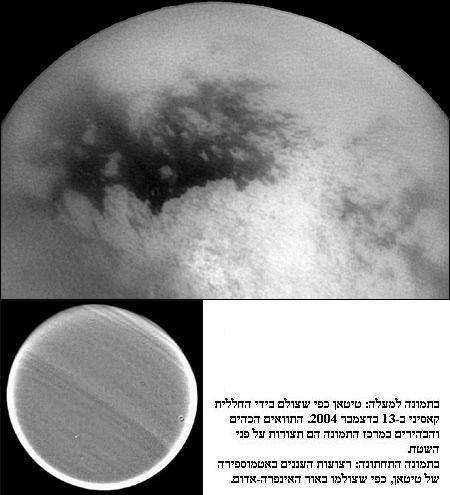Final approach before Huygens release for landing on the moon
The Cassini spacecraft this week performed the last flyby of the moon Titan before releasing Huygens for a rendezvous with the Saturnian moon. This transit gave engineers one last chance to get detailed information about the behavior of Titan's atmosphere.
The data is essential because it is important to know what the Huygens spacecraft's chances are of surviving the six-kilometer-per-second entry into Titan's compressed air on January 14, 2005. The flyby also provided a new record on the mysterious moon.
Because of the hazy conditions on Titan, Cassini's two previous flybys, in July and November, failed to provide any clear indication of the surface conditions Huygens is likely to encounter, if it does get there.
Speculation is now that the moon is covered in organic mud (made of ethane and methane). The possibility of the availability of rivers and lakes of liquid hydrocarbons on the surface has not yet been ruled out. The images taken by Cassini on Monday again reveal the same bright and dark flat tracks. It is not yet clear what these combinations of dark and light areas mean. One of the interesting images taken by Titan's wide-angle camera also shows bands in Titan's atmosphere. What is clear, however, from the Cassini collection data so far is that the Moon contains very few craters, and these are assumed to have been eroded either by weathering or some form of volcanic activity.
Cassini will make more than 40 approaches to Titan, a moon larger than the planets Pluto and Mercury, in its four-year journey, and scientists will need them all to build a complete picture of this unique satellite.
The current approach peaked last Monday at 12:46 GMT at an altitude of 2,358 kilometers. Cassini scientists expect to provide more detailed data of the new findings at an American Geophysical Society press conference later this week.
The Huygens spacecraft, which is 2.7 meters wide and weighs 319 kilograms, will separate from Cassini on December 25. This robotic lab will move on its own for 20 days until it enters Titan's atmosphere at high speed.
If the engineers have analyzed the atmosphere model correctly, the three parachute system should open at the right moment to provide Huygens with a gentle glide to the surface. This data will be transmitted to Cassini and it will transmit it to Earth.
The last system tests of Huygens before its separation from Cassini passed successfully, reports the European Space Agency, the operator of the Huygens spacecraft that will separate from Cassini in December and land on the moon Titan in January
25/11/2004

The European Space Agency's Huygens spacecraft, currently attached to the American Cassini spacecraft, is in good condition and has successfully passed the full set of tests for the 16th time.
This test is the last in-flight inspection of the spacecraft before the planned separation from Cassini in December. A preliminary analysis of real-time data received from the spacecraft showed that all the activities in the series of tests were carried out as planned and no malfunctions were evident.
The process was carried out 'live' as Cassini transmitted data to the accelerator in real time. However, the actual data was received on Earth one hour and ten minutes late, due to the time it takes for light and therefore also for radio signals to cross the space between Saturn and Earth.
For information on the European Space Agency website

